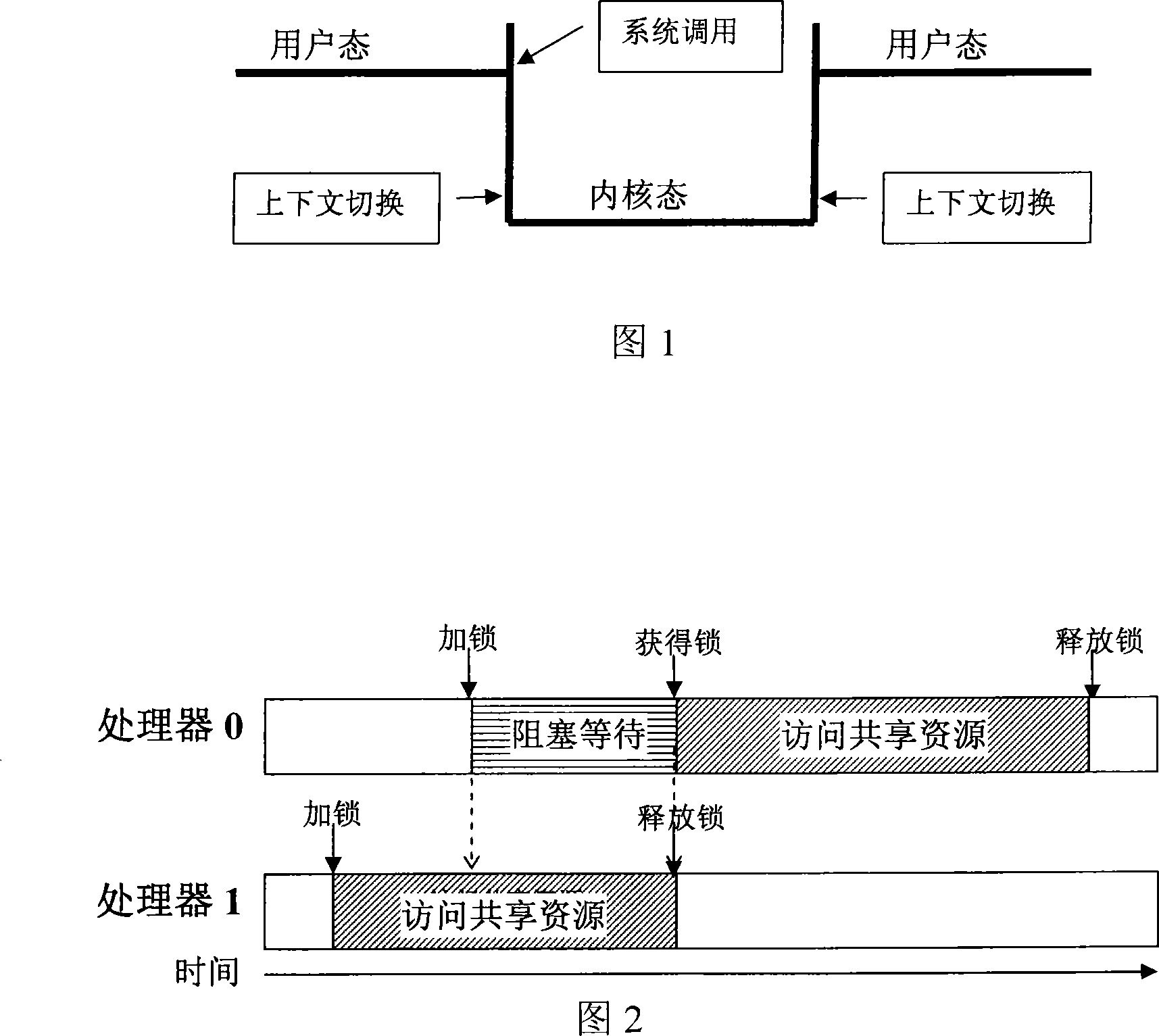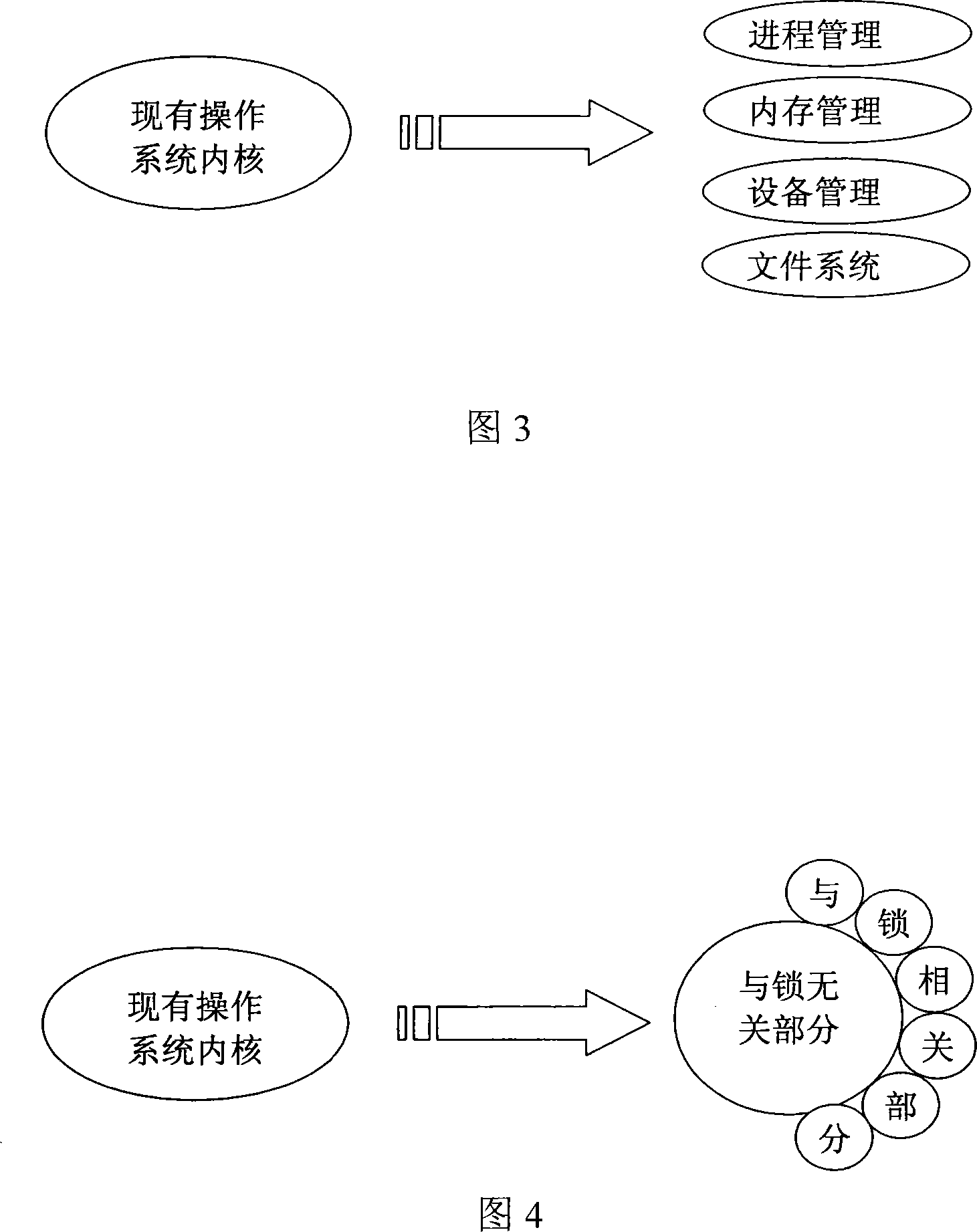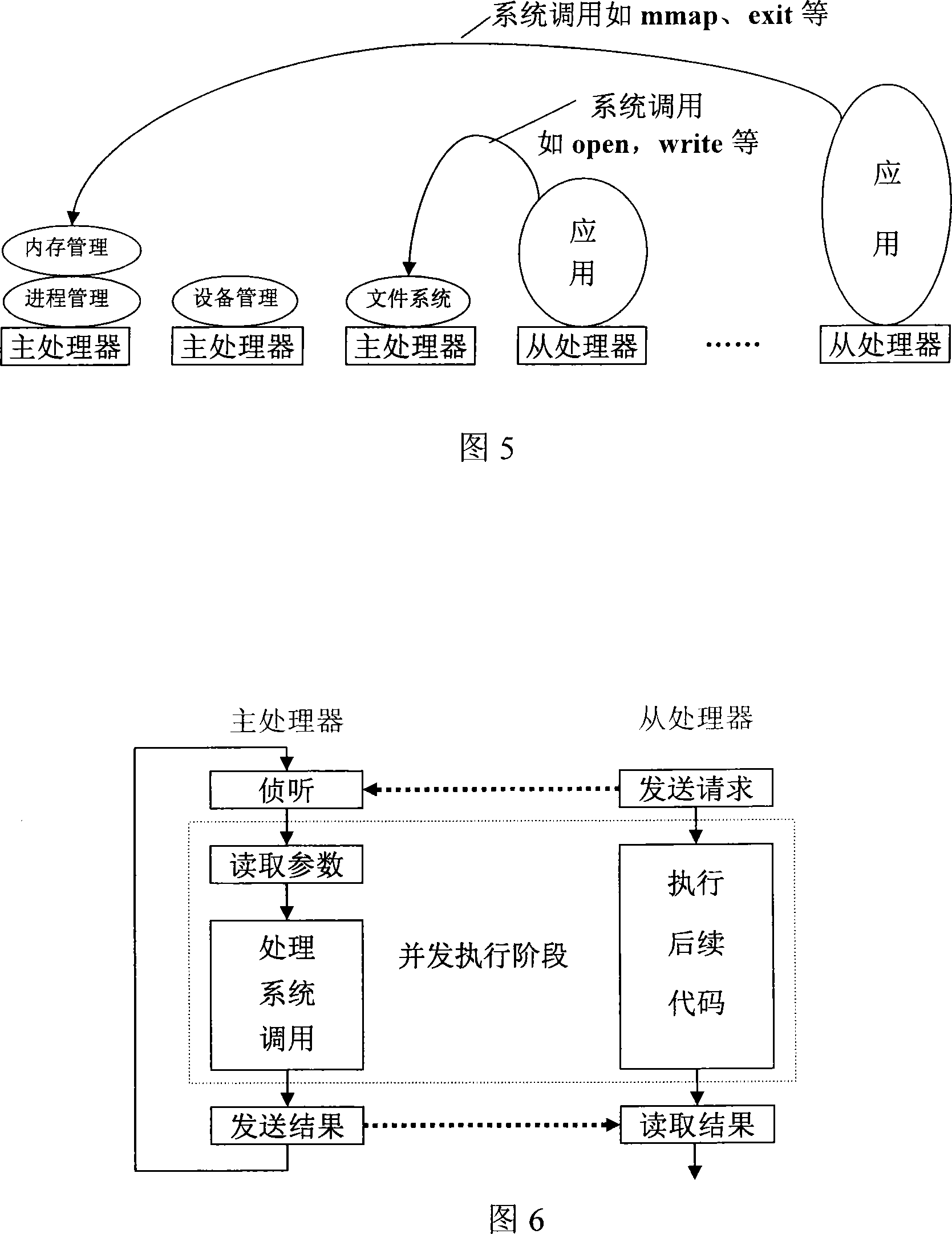Operating system and operating system management method
An operating system and management method technology, applied in the field of computer operating systems, can solve problems such as poor performance and scalability, mutually exclusive access, complexity, etc., achieve good performance and scalability, reduce context switching, and improve operating efficiency
- Summary
- Abstract
- Description
- Claims
- Application Information
AI Technical Summary
Problems solved by technology
Method used
Image
Examples
Embodiment Construction
[0060] In order to make the object, technical solution and advantages of the present invention clearer, the operating system and operating method based on multi-processors and / or multi-core processors of the present invention will be further described in detail below in conjunction with the accompanying drawings and embodiments. It should be understood that the specific embodiments described here are only used to explain the present invention, not to limit the present invention.
[0061] The development of multi-core processors is getting faster and faster, so that there are more and more multi-processor platforms, and the number of processors or processor cores is also increasing. Due to the use of context switching and lock mechanisms, existing operating systems have certain limitations in performance and scalability in environments with multiple processors or processor cores (especially more than 8).
[0062] As a specific embodiment, the present invention provides an opera...
PUM
 Login to View More
Login to View More Abstract
Description
Claims
Application Information
 Login to View More
Login to View More - R&D
- Intellectual Property
- Life Sciences
- Materials
- Tech Scout
- Unparalleled Data Quality
- Higher Quality Content
- 60% Fewer Hallucinations
Browse by: Latest US Patents, China's latest patents, Technical Efficacy Thesaurus, Application Domain, Technology Topic, Popular Technical Reports.
© 2025 PatSnap. All rights reserved.Legal|Privacy policy|Modern Slavery Act Transparency Statement|Sitemap|About US| Contact US: help@patsnap.com



